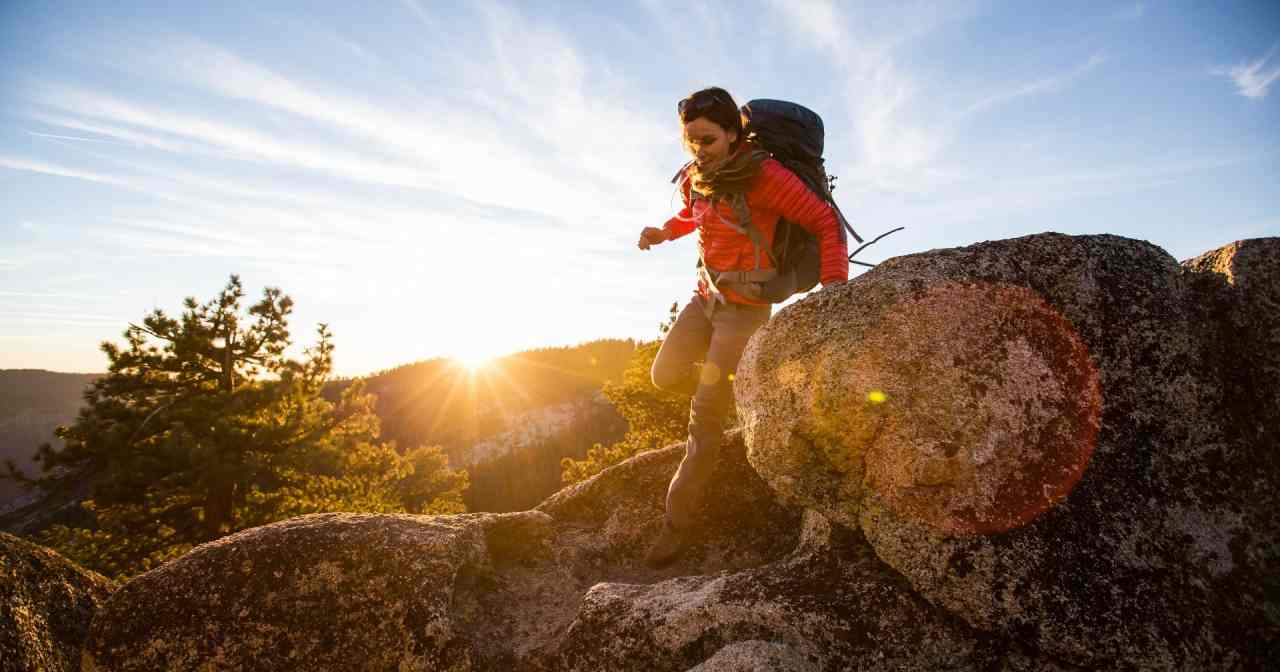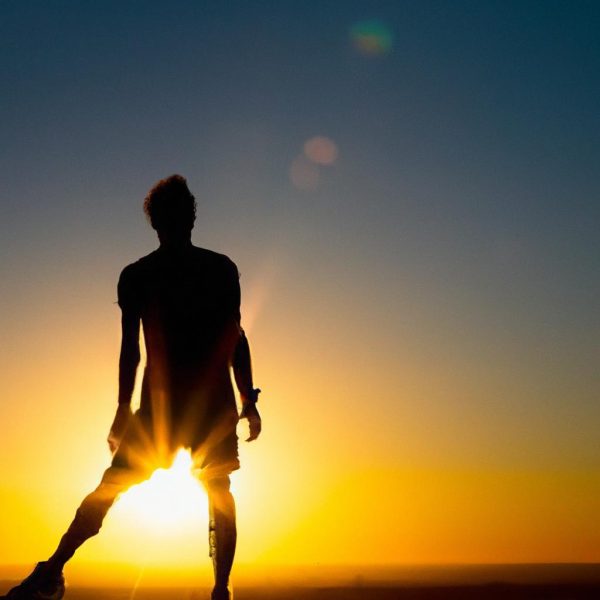
Treadmills make you want to scream with terror.
You see stationary bikes in your nightmares.
The thought of an elliptical wants to make you skip a workout altogether.
If any of these scenarios ring true for you, take a deep breath. There’s no need to suffer through cardio routines you don’t enjoy, because there’s something for everybody. For you, our treadmill-hating friend, we recommend hiking to get at least some of your weekly cardio in.
While some may look at hiking as a vacation activity or hobby, there are lots of physical and mental benefits to incorporating it into your exercise regimen. And even if you’re already a fitness junkie, it’s an entirely different type of fitness that you should ease your body into.
“Hiking is a great way to enhance your cardiorespiratory fitness,” Christie Ward-Ritacco, PhD, ACSM-certified exercise physiologist, says. “And you can utilize hikes to help you achieve the amount of weekly aerobic activity recommended by the 2018 Physical Activity Guidelines for Americans — 150-300 minutes of moderate intensity aerobic activity per week, or 75-150 minutes of vigorous intensity aerobic activity per week.”
Research from the University of Exeter found that spending at least two hours a week in nature promotes wellbeing and mental clarity. Time outdoors decreases blood pressure and stress hormones like cortisol, reduces feelings of anxiety and depression, and improves your immune system and mood.
If you want to get into it but don’t know how to start, here are the basics.
Get to Steppin’
According to the American Journal of Lifestyle Medicine guidelines, the first month you begin your hiking journey, you should include three days of 25- to 30-minute hikes a week on level terrain, with the goal being 20- to 30-minute miles.
The second month, strive for three days of hiking with 15 minutes on hills and a total hiking time of 40-50 minutes each. Your total minutes of hiking per week should be 150 minutes.
Bonus: You burn 60 percent more calories per mile when walking uphill!
If you don’t have immediate access to trails nearby but still want to train for a future hike, Ward-Ritacco assures us there are options.
“If you’re unable to get out on the trails multiple times per week, walking workouts can be used to help increase one’s cardiorespiratory fitness levels,” he says. “Using walking routes with hills can help to more readily stimulate the conditions you can face when hiking” she says.
Once you get more comfortable with the times and inclines, you can increase difficulty levels for more workout-oriented hiking.
“I like to pick a hiking route and time myself to see how long it takes,” says Jill Barnes, Ph.D., assistant professor of kinesiology at the University of Wisconsin-Madison, “and then progressively challenge myself to go faster each time I try it, but without missing out on the wonderful scenery.”
Even if you choose to hike only as a hobby, you’ll still need some gear.
3 Basic Tips for Safe Hiking
Wear hiking boots, not running shoes. Hiking boots have a thick durable sole to protect your feet from rocks, tree roots and creature havens. They also have a higher cut to prevent rolling or twisting your ankle and a thick tread providing valuable traction to prevent falls. Some of the best boots are made of water-resistant materials.
Some additional hiking materials are:
- Bug spray
- Water
- Snacks
- First-aid kit
- Weather-appropriate clothing
- Knife or multi-tool
TIP: Remember to take hiking seriously. While it can be amazingly fun, it can also be treacherous if you’re unprepared.
Use a map or GPS app. When you’re lost in the middle of a thicket of confusing trees, mountains and valleys, a navigation tool can be your lifeline.
Research navigation apps like Gaia GPS. The free version gives you GPS guidance so you can plan, record and even discover new trails. It also offers specifics of the trail with top-notch topographical maps so you can see what terrain you’ll be taking on. The premium version of the app has a host of next-level features like downloadable maps, so you’ll never lose your way.
Carry water. We mentioned it once, but this final note is so important we need to include it again. You’ll need some kind of hydration system while hiking, especially as your time on the trail increases. Bring a water bottle, use a waist pack that fits a bottle or invest in a hands-free option like a camelback. Hands-free hydration is definitely worth looking into, since it takes the hassle out of having to carry a water bottle as you’re scrambling up a trail.










